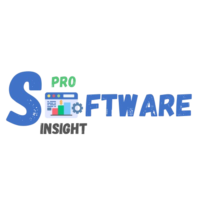Staff Scheduling Software - Streamlining Shift Management

Table of Contents:
Intro
- What is Staff Scheduling Software?
- How Staff Scheduling Software Benefits Businesses
- Challenges of Implementing Staff Scheduling Software
- Conclusion
Managing employee schedules can be one of the most time-consuming and complex tasks for businesses, especially in industries with shift-based work. Whether it’s a bustling restaurant, a healthcare facility, or a retail store, ensuring the right people are in the right place at the right time is critical to smooth operations. This is where staff scheduling software steps in, revolutionizing the way organizations handle shift management.
What is Staff Scheduling Software?
Staff scheduling software is a digital tool designed to automate and streamline the process of creating, managing, and optimizing employee work schedules. Unlike traditional methods such as spreadsheets or paper rosters, this software leverages technology to ensure accuracy, flexibility, and efficiency. Key features often include automated schedule generation, real-time updates, employee self-service portals, and integrations with payroll systems.
Why is it Relevant?
As businesses grow, manual scheduling becomes increasingly impractical. Errors in scheduling can lead to overstaffing, understaffing, or compliance violations. Staff scheduling software addresses these challenges by simplifying complex scheduling needs while ensuring transparency and accountability for both managers and employees.
How Staff Scheduling Software Benefits Businesses
1. Improved Efficiency and Time Savings
Manually creating schedules can take hours, especially for large teams. Scheduling software automates this process, allowing managers to generate schedules in minutes. Advanced algorithms can factor in variables such as employee availability, skill sets, and labor laws, reducing human error and saving valuable time.
2. Enhanced Employee Satisfaction
Most platforms include self-service portals where employees can view schedules, request time off, or swap shifts with colleagues. This level of transparency and flexibility fosters a sense of autonomy and improves job satisfaction. For example, companies like Starbucks have reported reduced employee turnover after adopting such tools.
3. Cost Control and Resource Optimization
Effective scheduling ensures optimal staffing levels, preventing overstaffing and minimizing unnecessary labor costs. Real-time analytics and reporting features allow businesses to monitor labor expenses and adjust schedules accordingly. For instance, retail chains often use data-driven scheduling to align staffing with peak customer hours.
4. Compliance and Risk Management
Industries with strict labor laws or union agreements—such as healthcare or manufacturing—can benefit from built-in compliance features. Scheduling software helps ensure adherence to labor regulations, such as mandatory breaks, overtime limits, and equal shift distribution, reducing the risk of legal disputes.
Challenges of Implementing Staff Scheduling Software
- Initial Learning Curve: Transitioning from manual systems to digital platforms may require training for both managers and employees.
- Cost of Implementation: Premium scheduling software can be expensive, particularly for small businesses with limited budgets.
- Integration Issues: Compatibility with existing tools like payroll systems or time-tracking software can be a concern.
- Resistance to Change: Employees accustomed to traditional scheduling methods may be hesitant to adopt a new system.
FAQs
Is staff scheduling software suitable for small businesses?
Absolutely. Many platforms offer scalable solutions tailored to the needs of small businesses, with affordable pricing plans and user-friendly interfaces.
Can the software handle last-minute schedule changes?
Yes, most tools allow managers to make real-time updates and notify employees instantly via email or mobile apps.
How secure is the data stored in scheduling software?
Reputable providers prioritize data security, offering encryption, regular backups, and compliance with regulations like GDPR.
What industries benefit most from scheduling software?
While almost any industry can use it, sectors like healthcare, retail, hospitality, and manufacturing see the most significant impact due to their dynamic staffing needs.
Conclusion
Staff scheduling software is no longer a luxury; it’s a necessity for businesses aiming to optimize operations, improve employee satisfaction, and stay competitive. By automating complex scheduling tasks and offering robust features, these tools save time, reduce costs, and mitigate risks. Whether you’re running a small café or managing a large healthcare facility, investing in staff scheduling software is a step towards more efficient and effective shift management. Take the leap today and transform the way your team works—one shift at a time.
